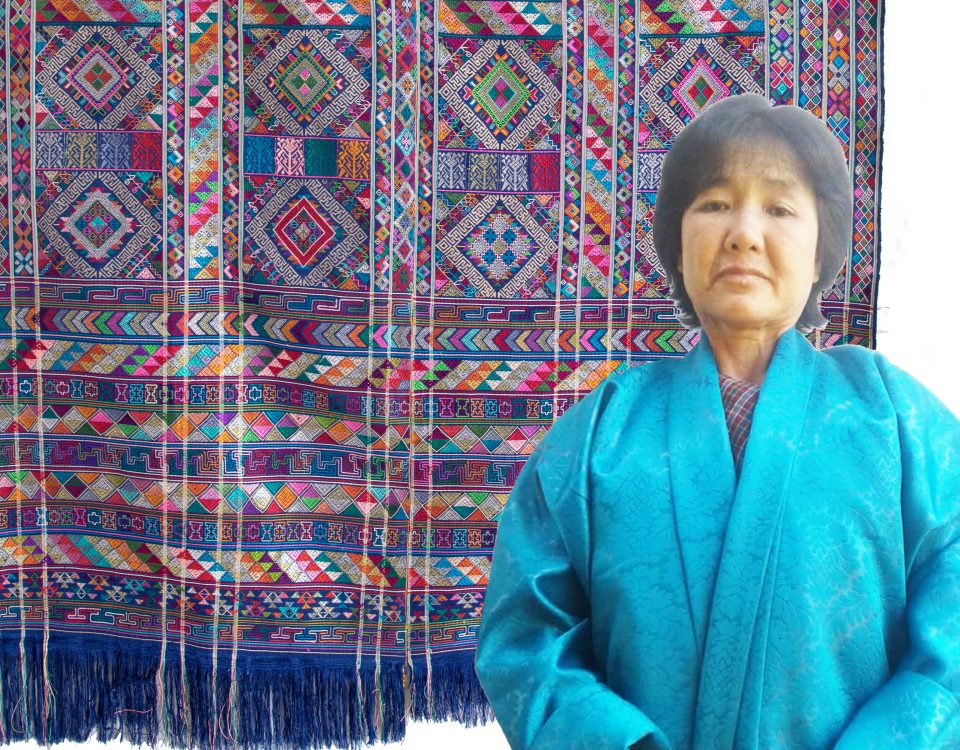Zhabdrung exhibition opens today
Exhibition: An exhibition on Zhabdrung Ngawang Namgyel begins today at the Textile Museum in Thimphu.
Her Majesty Gyalyum Sangay Choden Wangchuck, the Royal Patron, will grace the opening ceremony.
The exhibition titled “Zhabdrung Ngawang Namgyel – The Founder of Bhutan” is being organised by the Textile Museum, Royal Textile Academy, and the Department of Culture of the home ministry.
“The exhibition showcases the history of the Zhabdrung and his lineage through sacred relics, kuthangs, textiles and photographs,” states a Textile Museum press release. “This would be the first time that such a spiritually significant exhibition has been organised here at the Royal Textile Academy,” it adds.
“This exhibition would not have been possible without the support of Their Majesties The Kings,” the press release states. “The exhibition was initiated under the personal guidance of Her Majesty the Gyalyum Sangay Choden Wangchuck, Royal Patron of the Textile Museum and the Royal Textile Academy.”
Sacred artefacts belonging to Zhabdrung Ngawang Namgyel and his successive reincarnations, Chogley Jigme Tenzin and Chogley Yeshey Ngodrup will be on display, a Royal Textile Academy press release says.
The artefacts showcased in the exhibition are on loan from various private individuals and monastic institutions. “The support of the Dratshang Lhentshog, Simtokha Dzong, Jarogang Lhakhang and private individuals from Gasa is highly appreciated,” the Textile Museum press release states. “Along with the identification and collection of the artefacts much effort was put into conserving them prior to display,” it adds.
“The exhibition dedicated to Zhabdrung Ngawang Namgyel-the founder of our country bears immense spiritual significance, will bestow blessings and provide a window into the life and legacy of a very important figure in Bhutan’s history,” states the press release.
Zhabdrung Ngawang Namgyel
Zhabdrung is highly revered in Bhutan and is regarded as the founder of the country. Zhabdrung, which translates as ‘At whose feet one submits’, is considered to be an emanation of Avalokitesvara, the Buddha of Compassion and the reincarnation of Kuenkhen Pema Karpo, who was the 18th chief abbot of Ralung Monastery in Tibet.
It was in 1616 that Zhabdrung Ngawang Namgyel embarked on his historic journey from Tibet to Bhutan. Bhutan commemorates the 400th year of Zhabdrung’s arrival in Bhutan this year.
Zhabdrung founded Bhutan and ruled the country for over 35 years. During this time he repelled numerous Tibetan invasions and internal rebellions, consolidating the country under one leadership.
Bhutan today is a result of Zhabdrung’s enigmatic leadership and unsurpassed abilities at statecraft. Zhabdrung is accredited for the territorial and political unification of the country. Zhabdrung established the dual system of governance known as ‘Choe sid Nyi’ which separated temporal and secular affairs of the country under the legal code of Tsa Yig.
The unification of Bhutan as a nation state was enhanced through the construction of Dzongs, instituting of monastic communities, and the introduction of unique cultural and religious practices that are prevalent to this day.
Among other attributes, Zhabdrung was known to be a master miniature artist. The first European visitors to Bhutan, Portuguese Jesuits, Cecella and Cabral described Zhabdrung to be a compassionate and intelligent host who was an exemplary writer and artist. They also made a reference in their journals that Zhabdrung could draw a thousand Buddhas on his finger nail.
“His farsightedness in creating a distinct Bhutanese identity for the Bhutanese people with our language, dress and traditions separate us from the rest of the Himalayan region,” the Textile Museum press release states. “This has contributed immensely towards the survival of Bhutan as a sovereign nation.”
It is added: “We are blessed with the protection of our guardian deities and numerous scared relics, which include the Rangjung Khasarpaini that Zhabdrung had brought along with him from Tibet.”
Zhabdrung Ngawang Namgyel passed away in 1651 but his death was concealed for over 54 years under the pretext that he had entered into a strict retreat. The high clergy took extreme measures to conceal his death due to fears of invasions and uprisings. His meals were served on time and daily rituals were conducted regularly. Orders and edicts issued in writing and someone else would even impersonate him as required on some occasions.
“Such was the sacred role Zhabdrung played in safeguarding Bhutan’s newfound sovereignty as a unified nation state,” it is stated.
Staff reporter
Source: Kuensel





